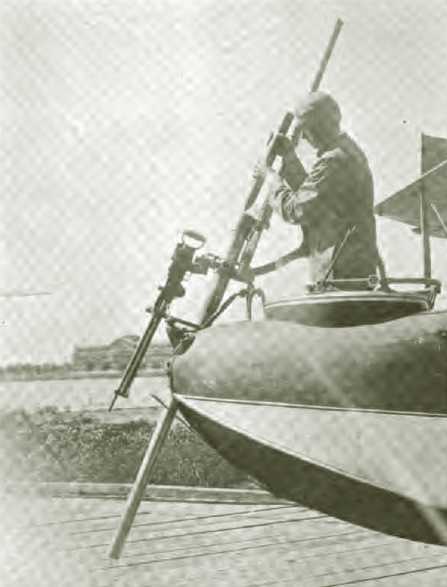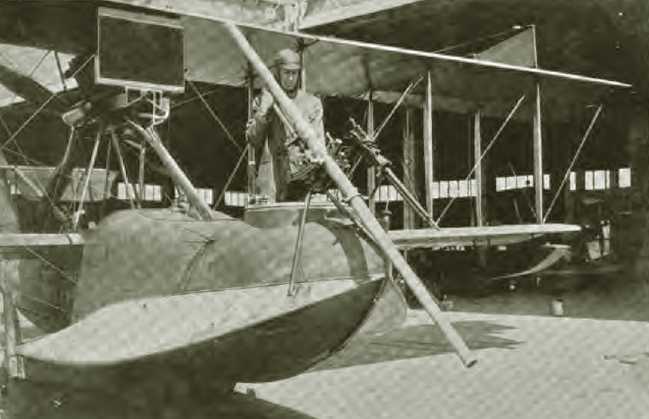
Loading a round into the Davis Gun
|

Davis gun with co-firing Lewis Machine
Gun
|
| This was a Davis recoilless gun for aircraft
to use against submarines. The original design had two barrels aligned
with their breech blocks adjacent, one firing a 3" (7.62 cm) shell forward
and the other a charge of birdshot and vaseline to the rear. Weight
excluding the breech block was 182 lbs. (82.6 kg) and chamber pressure
was 15 tons/in2 (2,365 kg/cm2). A Lewis MG
was used to "spot" for the Davis gun.
In later guns the birdshot charge was eliminated and instead the steel cartridge case itself was expelled to the rear, thus leaving the breech clear for the next round. Projectile weighed 9 lbs. (4.1 kg). The design was similar to the 6-pdr Mark 12 Davis gun. |